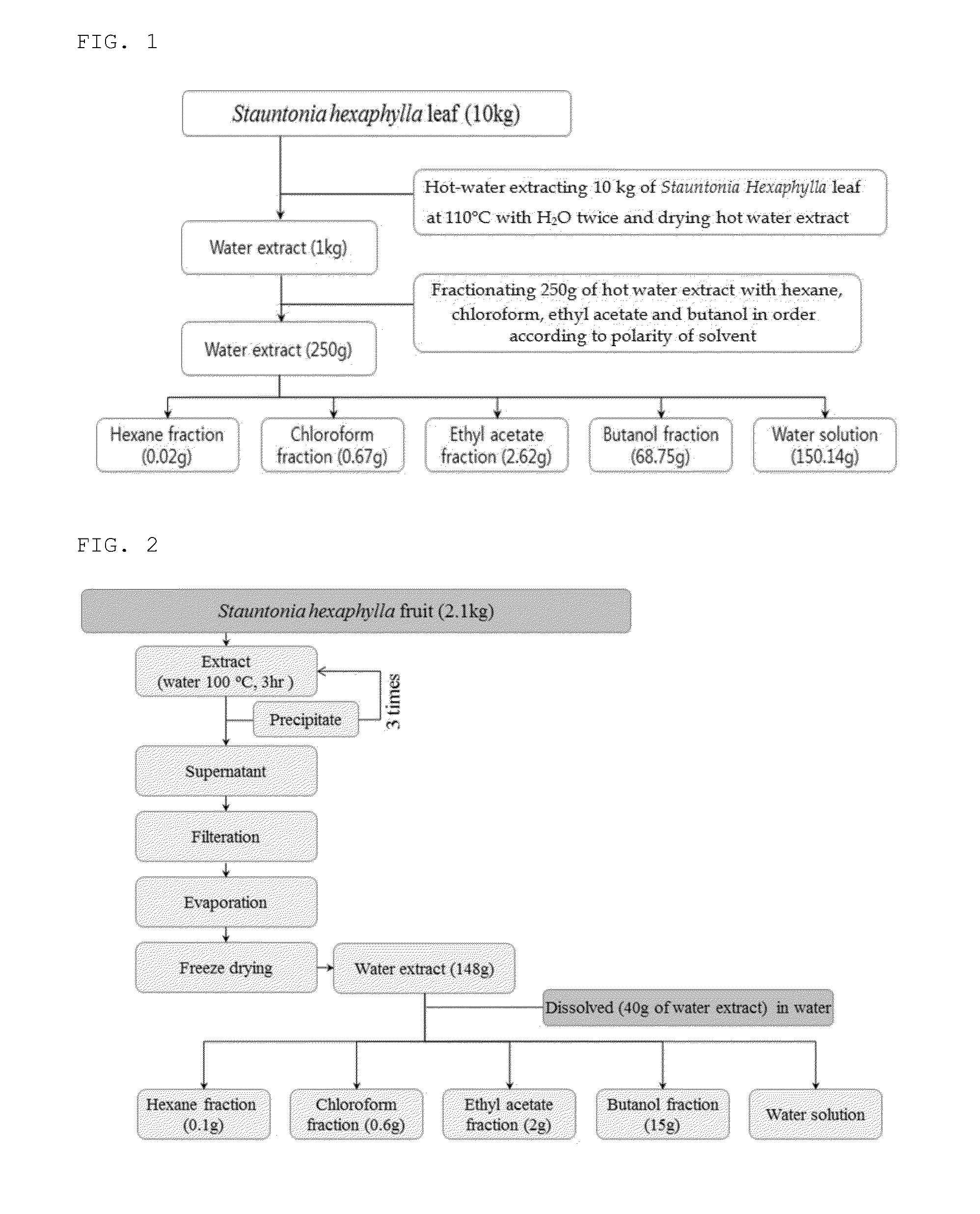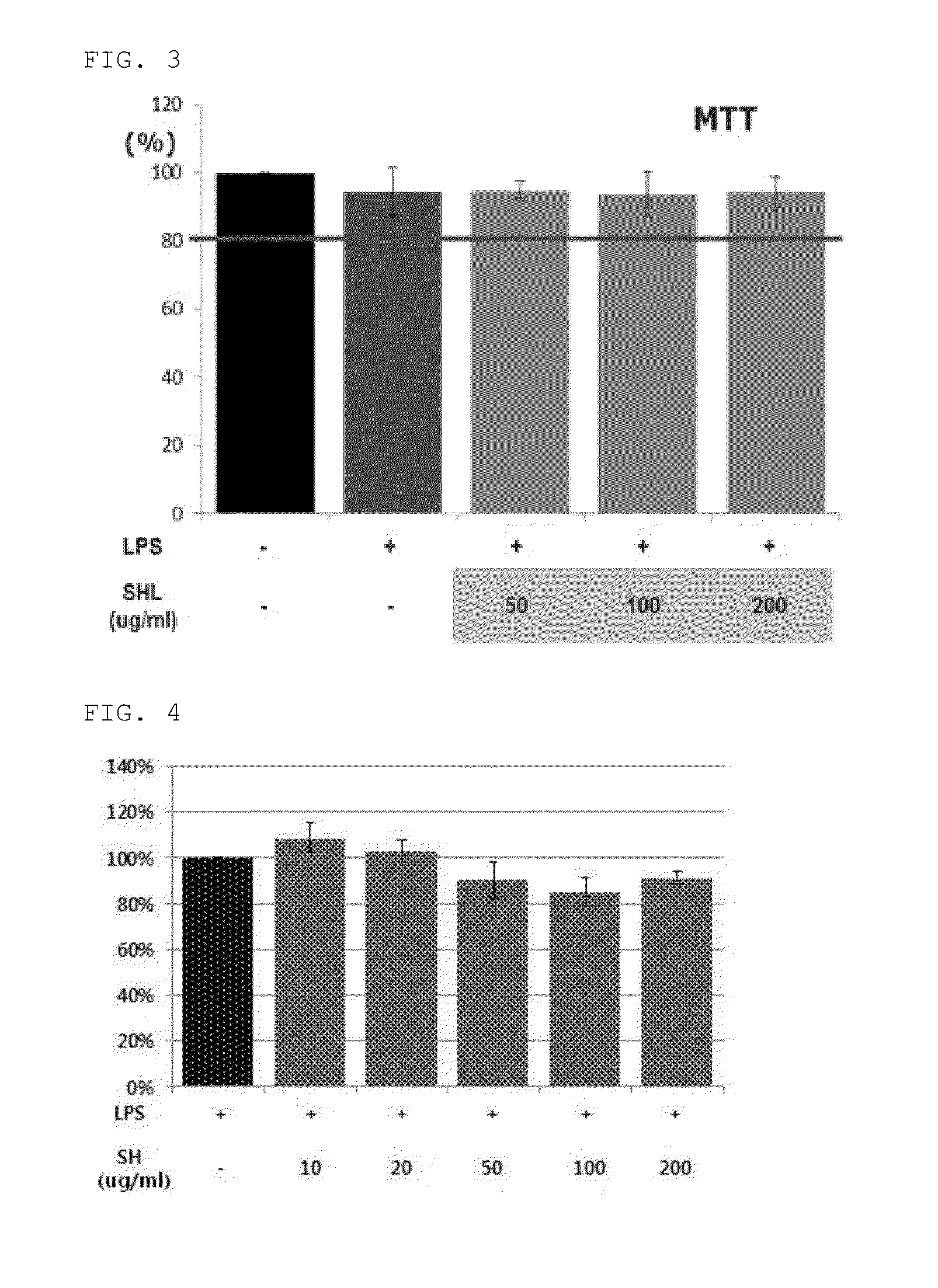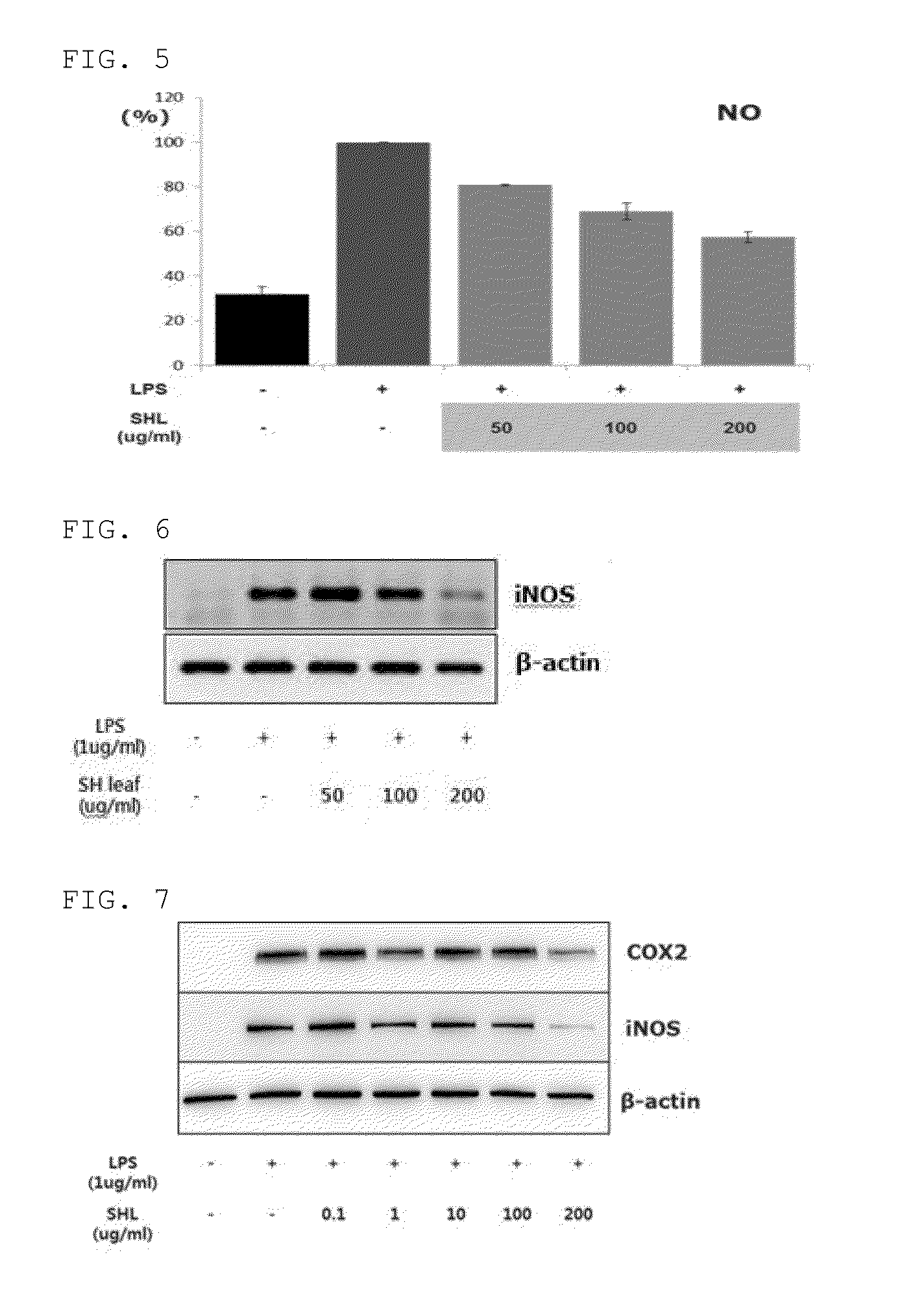Medical composition containing Stauntonia hexaphylla extract
a technology of stauntonia hexaphylla and extract, which is applied in the direction of antibacterial agents, extracellular fluid disorders, immunological disorders, etc., can solve the problems of inability to fully absorb stauntonia hexaphylla, inability to detect and detect the presence of stauntonia hexaphylla, etc., to achieve low cytotoxicity
- Summary
- Abstract
- Description
- Claims
- Application Information
AI Technical Summary
Benefits of technology
Problems solved by technology
Method used
Image
Examples
example 1
Preparation of Stauntonia Hexaphylla Extract and Fraction
[0131]1-1. Preparation of Stauntonia Hexaphylla Extract
[0132]A Stauntonia Hexaphylla leaf hot water extract was prepared at 110° C. using hot water and 10 kg of a Stauntonia Hexaphylla leaf in accordance with a hot water extraction method illustrated in FIG. 1. In addition, a Stauntonia Hexaphylla fruit hot water extract was prepared at 100° C. using 40 L of hot water and 2,100 g of a Stauntonia Hexaphylla fruit in accordance with a hot water extraction method described in FIG. 2.
[0133]More specifically, 200 L of distilled water was added to 10 kg of a Stauntonia Hexaphylla leaf washed with distilled water, and hot water extraction was then performed while heating the resulting mixture in an electric medicine boiling pot at 100° C. for 3 hours. In addition, 40 L of distilled water was added to 2,100 g of a Stauntonia Hexaphylla fruit washed with distilled water, and hot water extraction was then performed while heating the res...
example 2
Cytotoxicity Test of Extracts and Fractions
[0147]To determine cytotoxicity of the Stauntonia Hexaphylla leaf hot water extract, the Stauntonia Hexaphylla fruit hot water extract and the Stauntonia Hexaphylla leaf hot water extract fraction prepared in Example 1, mouse macrophage primary cells, RAW264.7 cells available from ATCC were used.
[0148]DMEM / F12 (Dulbecco's modified Eagle's medium / Nutrient Mixture Ham's F12), FBS (fetal bovine serum), L-glutamine and penicillin-streptomycin used for culturing the cells were obtained from Gibco / BRL (USA).
[0149]The RAW264.7 cells were cultured in a DMEM / F12 medium supplemented with 10% FBS, 1% penicillin-streptomycin and 1% L-glutamine and incubated at 37° C. and at a predetermined humidity in a CO2 incubator (5% CO2 / 95% air).
[0150]The cells were cultured to a confluence of about 80% on a culture dish, and a monolayer of the cells was rinsed with PBS (pH 7.4) and then washed. Then, the cells were treated with 0.25% trypsin and 2.56 mmol / L of ED...
example 3
Determination of Anti-Inflammatory Effect of Stauntonia Hexaphylla Leaf Extract and Fraction Thereof
[0157]The RAW 264.7 cells cultured in Example 2 were used to determine anti-inflammatory effect of the Stauntonia Hexaphylla leaf extract and fractions thereof prepared in Example 1.
[0158]The cells were treated with the Stauntonia Hexaphylla leaf hot water extract or solvent fractions thereof prepared in Example 1, together with LPS, and cultured for 24 hours in the same manner as in Example 2. The cultured solution was centrifuged at 3,000 rpm for 5 minutes and a supernatant was separated. The supernatant was treated and reacted with an equal amount of Griess reagent (1% sulfanilamide, 0.1% naphthyl-ethylene diamine dihydrochloride, 2% phosphoric acid, Promega, USA), and NO secretion was measured at 540 nm. The results are shown in FIGS. 5 and 11.
[0159]As can be seen from FIG. 5, a control group not treated with LPS was found to exhibit low NO secretion. On the other hand, an experim...
PUM
 Login to View More
Login to View More Abstract
Description
Claims
Application Information
 Login to View More
Login to View More - R&D
- Intellectual Property
- Life Sciences
- Materials
- Tech Scout
- Unparalleled Data Quality
- Higher Quality Content
- 60% Fewer Hallucinations
Browse by: Latest US Patents, China's latest patents, Technical Efficacy Thesaurus, Application Domain, Technology Topic, Popular Technical Reports.
© 2025 PatSnap. All rights reserved.Legal|Privacy policy|Modern Slavery Act Transparency Statement|Sitemap|About US| Contact US: help@patsnap.com



